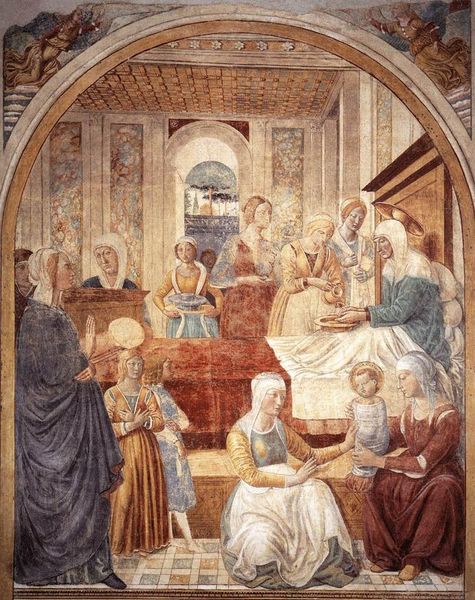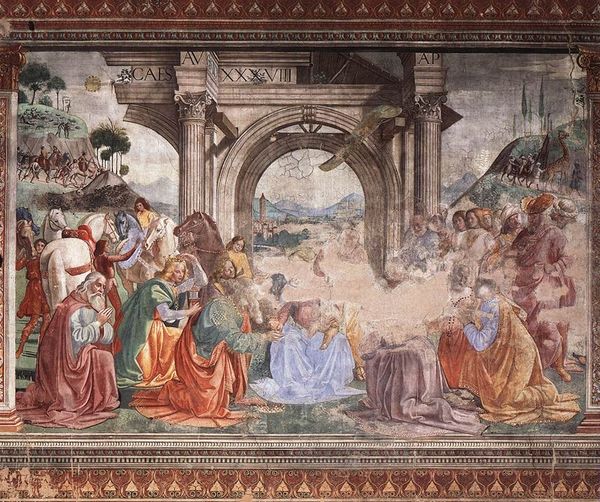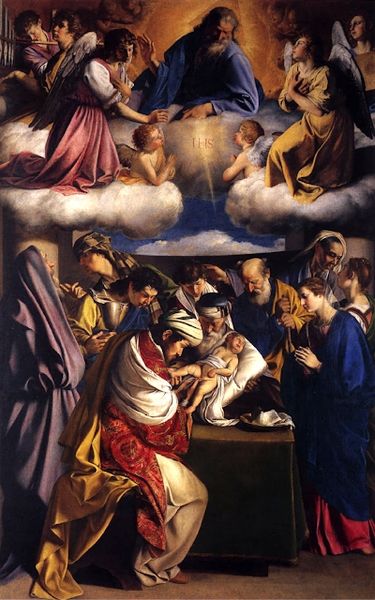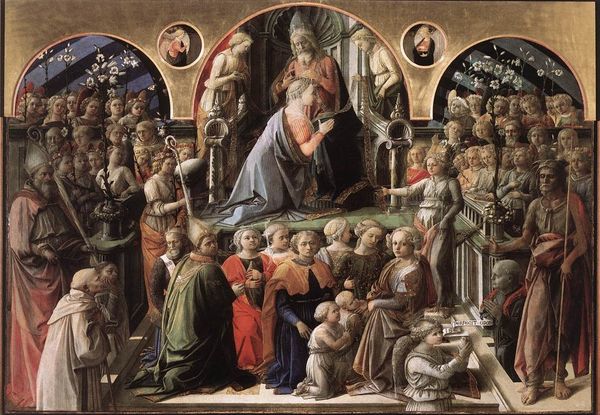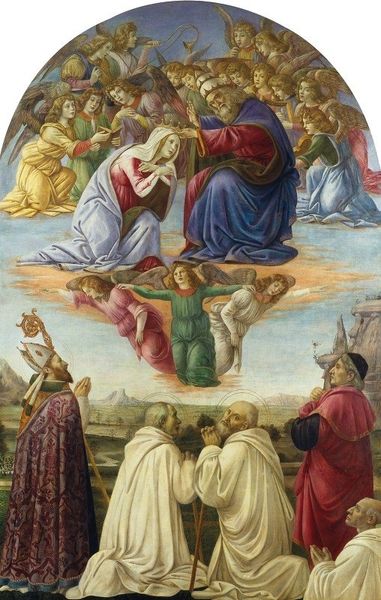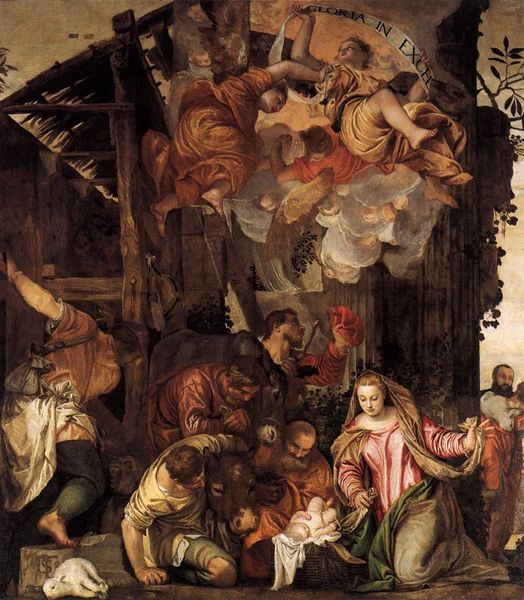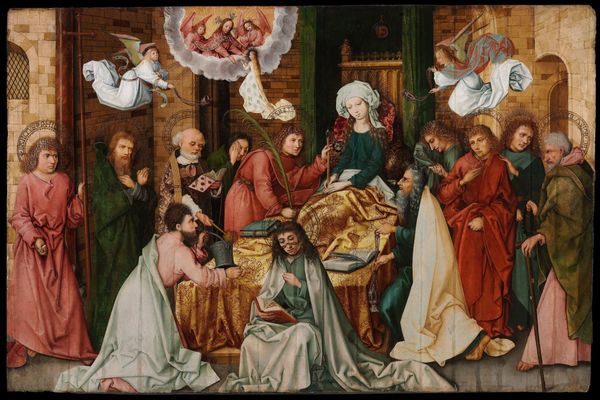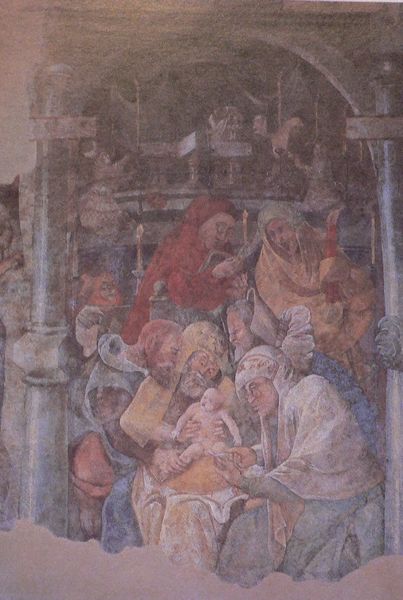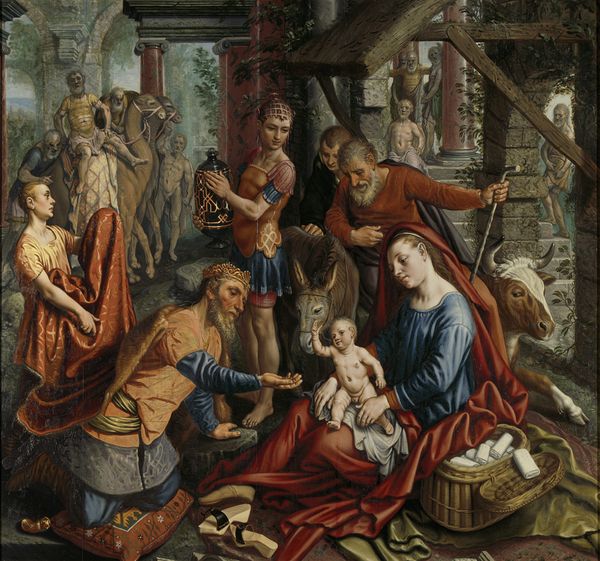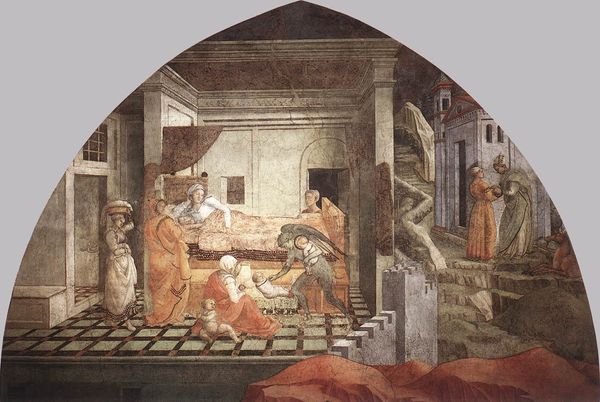
painting, oil-paint, mural
#
allegory
#
baroque
#
painting
#
oil-paint
#
figuration
#
oil painting
#
christianity
#
history-painting
#
italian-renaissance
#
mural
#
virgin-mary
Dimensions: 360 x 335 cm
Copyright: Public domain
Editor: This is Guido Reni’s “Mary’s Birth,” created around 1611, and it looks like an oil painting, perhaps even a mural. The mood is… well, bustling. There's a lot of activity depicted. What do you see in this piece? Curator: I see a fascinating intersection of the sacred and the social. While ostensibly depicting a religious event, Reni gives us a glimpse into the communal experience of childbirth in the 17th century. Consider how the female figures dominate the scene, engaged in acts of care, labor, and celebration. Where are the men? What does their absence suggest about the gendering of childbirth in this era? Editor: That's a really good point. It feels very women-centric. So you're saying this isn't just a painting about Mary; it’s also about the social role of women? Curator: Exactly. We need to consider this work within its socio-historical context. Childbirth was exclusively within the female domain, representing a space of female knowledge, support, and ritual. And notice the subtle ways Reni challenges idealized depictions of motherhood. The women are actively working, not passively posing. The gestures aren't gentle or glamorous, which contrasts sharply with how female religious figures were often represented. How might this impact contemporary understanding of womanhood? Editor: It really makes you think about the lived experiences behind these traditional religious stories, not just the divine aspects. I hadn’t really considered how actively Reni depicts their roles and what it reflects. Curator: Precisely! And the presence of those angelic figures in the painting begs another question; how might traditional religion function when integrated within people’s material reality? Editor: I’m glad I asked you about this piece. I definitely see it differently now, more grounded and politically conscious, maybe. Curator: Yes, it speaks volumes, and it whispers forgotten narratives. Looking at this work through a contemporary lens helps us to excavate these hidden voices and understand how art can be a powerful tool for social commentary.
Comments
No comments
Be the first to comment and join the conversation on the ultimate creative platform.
